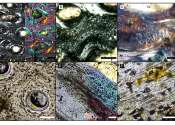Paleontologists unearth what may be the largest known marine reptile
The fossilized remains of a second gigantic jawbone measuring more than two meters long has been found on a beach in Somerset, UK. Experts have identified the bones as belonging to the jaws of a new species of enormous ichthyosaur, ...









